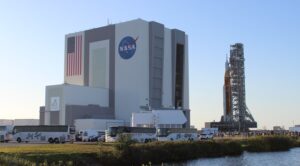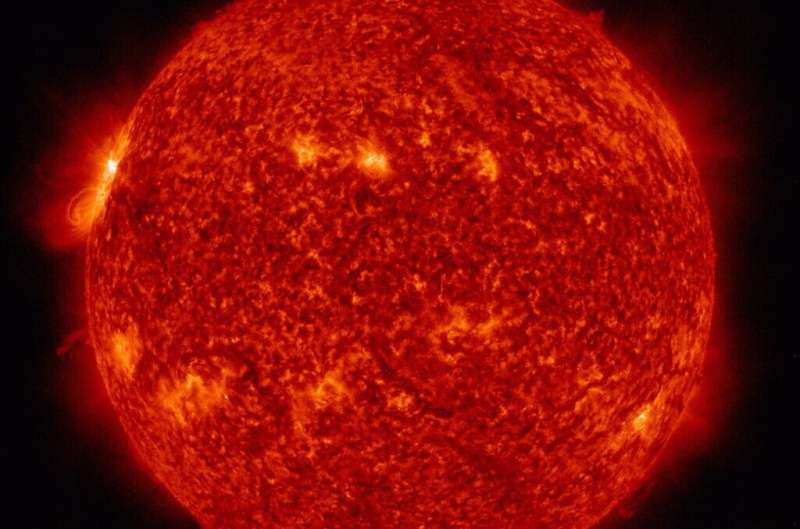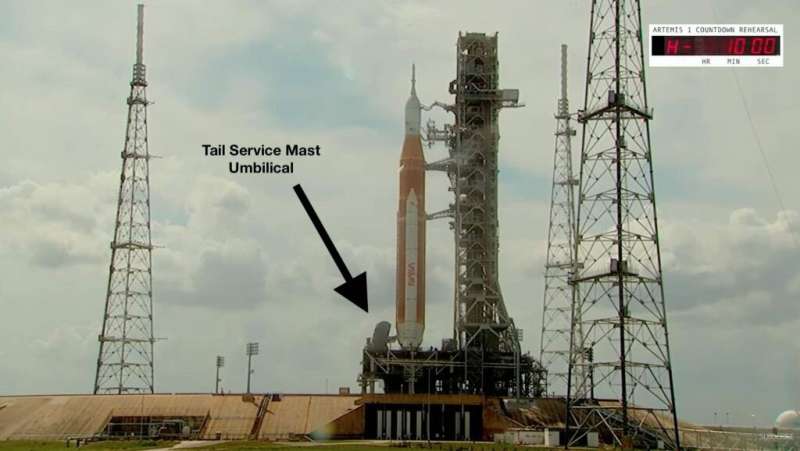China reveals missions of Shenzhou-14, Shenzhou-15 space crews
Tuesday, 19 April 2022 08:42 The crews of China's Shenzhou-14 and Shenzhou-15 missions have been selected, and are carrying out relevant training and mission preparations, according to a press conference on Sunday.
Both crews will stay in orbit for six months, and they will for the first time rotate in orbit to realize the uninterrupted manned residence, Huang Weifen, chief designer of the China manned space program's
The crews of China's Shenzhou-14 and Shenzhou-15 missions have been selected, and are carrying out relevant training and mission preparations, according to a press conference on Sunday.
Both crews will stay in orbit for six months, and they will for the first time rotate in orbit to realize the uninterrupted manned residence, Huang Weifen, chief designer of the China manned space program's Core module of China's space station achieves anticipated goal
Tuesday, 19 April 2022 08:42 Tianhe, the core module of China's space station, has completed its verification of key technologies and achieved its expected goal.
Yang Hong, chief designer of the space station system of the China Manned Space Program at the China Academy of Space Technology, made the remarks at a press conference in Beijing on Sunday.
Yang said the core module has been in orbit for almost one y
Tianhe, the core module of China's space station, has completed its verification of key technologies and achieved its expected goal.
Yang Hong, chief designer of the space station system of the China Manned Space Program at the China Academy of Space Technology, made the remarks at a press conference in Beijing on Sunday.
Yang said the core module has been in orbit for almost one y Planet releases slew of datasets for planetary variables
Tuesday, 19 April 2022 08:42 Planet Labs PBC has announced the release of Planetary Variables, a new product offering consisting of three pre-processed, accurate data feeds that measure the conditions of dynamic systems on the surface of the Earth. The three Planetary Variables feeds consist of Soil Water Content, Land Surface Temperature, and Vegetation Biomass Proxy to help customers make informed decisions in industries
Planet Labs PBC has announced the release of Planetary Variables, a new product offering consisting of three pre-processed, accurate data feeds that measure the conditions of dynamic systems on the surface of the Earth. The three Planetary Variables feeds consist of Soil Water Content, Land Surface Temperature, and Vegetation Biomass Proxy to help customers make informed decisions in industries SpaceX launches second U.S. reconnaissance satellite on Falcon 9 rocket
Tuesday, 19 April 2022 08:42 SpaceX on Sunday successfully launched a U.S. spy satellite for the National Reconnaissance Office on its Falcon 9 rocket.
The company announced liftoff in the launch from the Vandenberg Space Force Base in California at 9:14 a.m.
The Falcon 9 carried the NROL-85 satellite that is used to collect and deliver "space-based intelligence, surveillance and reconnaissance," the office
SpaceX on Sunday successfully launched a U.S. spy satellite for the National Reconnaissance Office on its Falcon 9 rocket.
The company announced liftoff in the launch from the Vandenberg Space Force Base in California at 9:14 a.m.
The Falcon 9 carried the NROL-85 satellite that is used to collect and deliver "space-based intelligence, surveillance and reconnaissance," the office 100 km, the current Longest Distance of Quantum Secure Direct Communication
Tuesday, 19 April 2022 08:42 Confidentiality of communication is essential in modern societies. Traditional way of secure communication is to use encryption, which is based on the computational difficulty of certain mathematical problems such as factorizing large integers. In such schemes, the two parties first distribute a key using an asymmetric cryptographic algorithm such as RSA, which is based on the difficulty of inte
Confidentiality of communication is essential in modern societies. Traditional way of secure communication is to use encryption, which is based on the computational difficulty of certain mathematical problems such as factorizing large integers. In such schemes, the two parties first distribute a key using an asymmetric cryptographic algorithm such as RSA, which is based on the difficulty of inte NASA moon rocket headed back to Vehicle Assembly Building after testing delays
Tuesday, 19 April 2022 08:42 The launch of NASA's new moon rocket has been pushed back by nearly a month after the Space Launch System failed to complete necessary prelaunch testing, officials said Monday.
With the rocked estimated to lift off sometime between June 6 and June 16, NASA officials said that launching during that window now would be challenging after issues during the SLS's wet dress rehearsal prevente
The launch of NASA's new moon rocket has been pushed back by nearly a month after the Space Launch System failed to complete necessary prelaunch testing, officials said Monday.
With the rocked estimated to lift off sometime between June 6 and June 16, NASA officials said that launching during that window now would be challenging after issues during the SLS's wet dress rehearsal prevente Perseverance at the Delta
Tuesday, 19 April 2022 08:42 Last week's blog talked about the rapid traverse of Perseverance to the Delta. This weeks blog entry will talk about the Delta itself, and why it is something worth rapidly traversing towards!
The prospect of the delta for me is that every day will be full of excitement and could bring anything. Let me explain that a bit further. On a space mission like M2020 you get used an exciting timel
Last week's blog talked about the rapid traverse of Perseverance to the Delta. This weeks blog entry will talk about the Delta itself, and why it is something worth rapidly traversing towards!
The prospect of the delta for me is that every day will be full of excitement and could bring anything. Let me explain that a bit further. On a space mission like M2020 you get used an exciting timel Navy conducts historic test of new laser weapon system
Tuesday, 19 April 2022 08:42 The ground-based laser system homed in on the red drone flying by, shooting a high-energy beam invisible to the naked eye. Suddenly, a fiery orange glow flared on the drone, smoke poured from its engine and a parachute opened as the craft tumbled downward, disabled by the laser beam.
The February demonstration marked the first time the U.S. Navy used an all-electric, high-energy laser weap
The ground-based laser system homed in on the red drone flying by, shooting a high-energy beam invisible to the naked eye. Suddenly, a fiery orange glow flared on the drone, smoke poured from its engine and a parachute opened as the craft tumbled downward, disabled by the laser beam.
The February demonstration marked the first time the U.S. Navy used an all-electric, high-energy laser weap Schedule effects of SLS rollback still uncertain
Tuesday, 19 April 2022 00:23
NASA managers said a rollback of the Space Launch System from its launch pad after three truncated countdown tests will allow them to address issues both at the pad and with the vehicle, but that it was too early to predict what it would do to the schedule for the vehicle’s first launch.
U.S. declares ban on anti-satellite missile tests, calls for other nations to join
Monday, 18 April 2022 23:32
Vice President Kamala Harris announced April 18 that the United States will ban direct-ascent anti-satellite (ASAT) missile tests that create orbital debris.
The post U.S. declares ban on anti-satellite missile tests, calls for other nations to join appeared first on SpaceNews.
Rivada hopes its LEO plan will rise above Kleo Connect legal battles
Monday, 18 April 2022 23:05
German satellite startup Kleo Connect’s majority shareholders are challenging a deal they say minority investors illegally devised to give its spectrum to Rivada Networks, which plans to use the frequencies for its own low Earth orbit constellation.
Sun releases significant solar flare
Monday, 18 April 2022 20:45
The Sun emitted a significant solar flare on April 16, 2022, peaking at 11:34 p.m.
NASA moon rocket faces more flight delays as repairs mount
Monday, 18 April 2022 20:38
Lockheed Martin proposes multi-layer space network for missile defense
Monday, 18 April 2022 19:42
DoD is spending billions of dollars on missile-warning space sensors located in geostationary and polar orbits, but there are no plans to connect them with new constellations that DoD plans to field in low and medium Earth orbits
NASA is having a tough time testing the SLS
Monday, 18 April 2022 19:15
NASA's Space Launch System (SLS) has been having some problems getting tested since it rolled out onto launch pad 39B last month. These tests, called wet dress rehearsals, are used to find any problems with loading the propellant and verify that all of the rocket's systems are able to handle it being exposed to cryogenics.
After this most recent attempt on April 14th, it is clear that the SLS isn't ready for flight yet. The problems that the teams have been encountering have led them to make some procedural changes and slight adjustments in operations and software triggers. There are also the leak problems that have shown up that have to be addressed.

